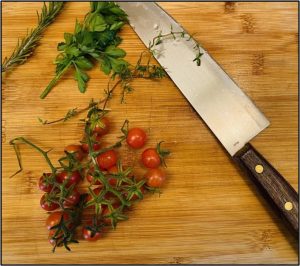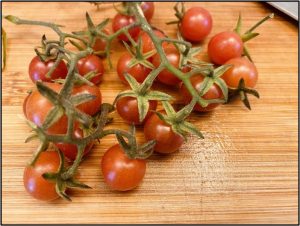Ever grown an Everglades Tomato? These marble-sized tomatoes can handle many of Florida’s elements and have a great flavor that’s both sweet and tangy.
Many gardeners who allow this tomato to reside in their garden typically use the plant as a garden vending machine, pulling off tomatoes while weeding for a quick snack. Undoubtedly, that is one of the best ways to enjoy the Everglades tomato, but what if we brought it into the kitchen?
A Quick History
The Everglades Tomato is considered to be a “currant tomato.” This means it is closely related to the original tomatoes that began in northern Peru and southern Ecuador. It was likely moved to southern Florida via bird migration and was brought back to Europe by Spanish explorers to be further hybridized.
Due to its adaptation to Florida’s climate and those like it, the Everglades Tomato has a high resistance to typical diseases that plague tomatoes in Florida. Some of these diseases include verticillium and fusarium wilts. It can also produce fruits in higher temps than other tomatoes, making it an ideal summer vegetable in the garden (Estabrook 2015).
What is the takeaway? Everglades Tomato is well adapted to perform well in Florida’s climate.
Harvesting Everglades Tomatoes
The harvest process for these tomatoes is like harvesting other tomatoes, but with a slight twist. First, it may be worth your while to search around the plant to find as many ripe tomatoes as possible. They can really hide themselves so don’t be afraid to move branches aside and get in there.
Second –and arguably most important- is that Everglades Tomatoes have a thin skin that breaks easily, especially when you pull it from the stem. To avoid this, I like to harvest sets of tomatoes at a time (even if one isn’t fully ripe) or I will take a good portion of the stem with each tomato.
Third, you may not get a humongous haul of tomatoes but even with a few, they can add wonderful flavor to a dish.
Cooking Everglades Tomatoes
There are many ways you can incorporate everglades tomatoes into your dishes, both raw and cooked. Although they burst easily so I suggest using them whole when cooking them. In this recipe, I only utilized about quarter to half a cup of tomatoes because that’s all I harvested, and as gardeners, that may be all we get at once, but it’s still enough to make a great dish.
I also grabbed a few other herbs that were in my garden, all of which are optional, so use what savory herbs you have available in your garden or pantry. I harvested a few sprigs of thyme, which is my favorite for a dish like this because it infuses well with the olive oil. I also threw in a little rosemary, parsley, and garlic. I used about a tablespoon of each herb I included.
I washed the tomatoes and placed them in a pan with three tablespoons of olive oil set to medium heat. The pan I used could be broiled in an oven. If you don’t have one, feel free to throw all the ingredients cold into a baking dish and broil for an extra minute.
Once the pan oil was sizzling and the herbs were giving off fragrance, I pulled the pan off the burner and added cut up goat cheese rounds. A few notes on goat cheese, first, if you don’t like it, sub it with some other fun looking, semi-soft cheese like mozzarella. Second, goat cheese is best cut when left in the freezer for 10 – 15 minutes, don’t try to saw it either, just cut straight through with a sharp knife.
After you’ve added the goat cheese, put the pan into the oven and turn on the broiler for 3 – 5 minutes. Try not to overcook the cheese because it can dry out quickly.
Cut some bread and serve it up! I think it works best as an appetizer for hosting, because it’s fun and easy but should be served while warm!
References
Estabrook, Barry. “Why Is This Wild, Pea-Sized Tomato So Important?” Smithsonian Magazine. 22 July 2015. https://www.smithsonianmag.com/travel/why-wild-tiny-pimp-tomato-so-important-180955911/
 6
6





